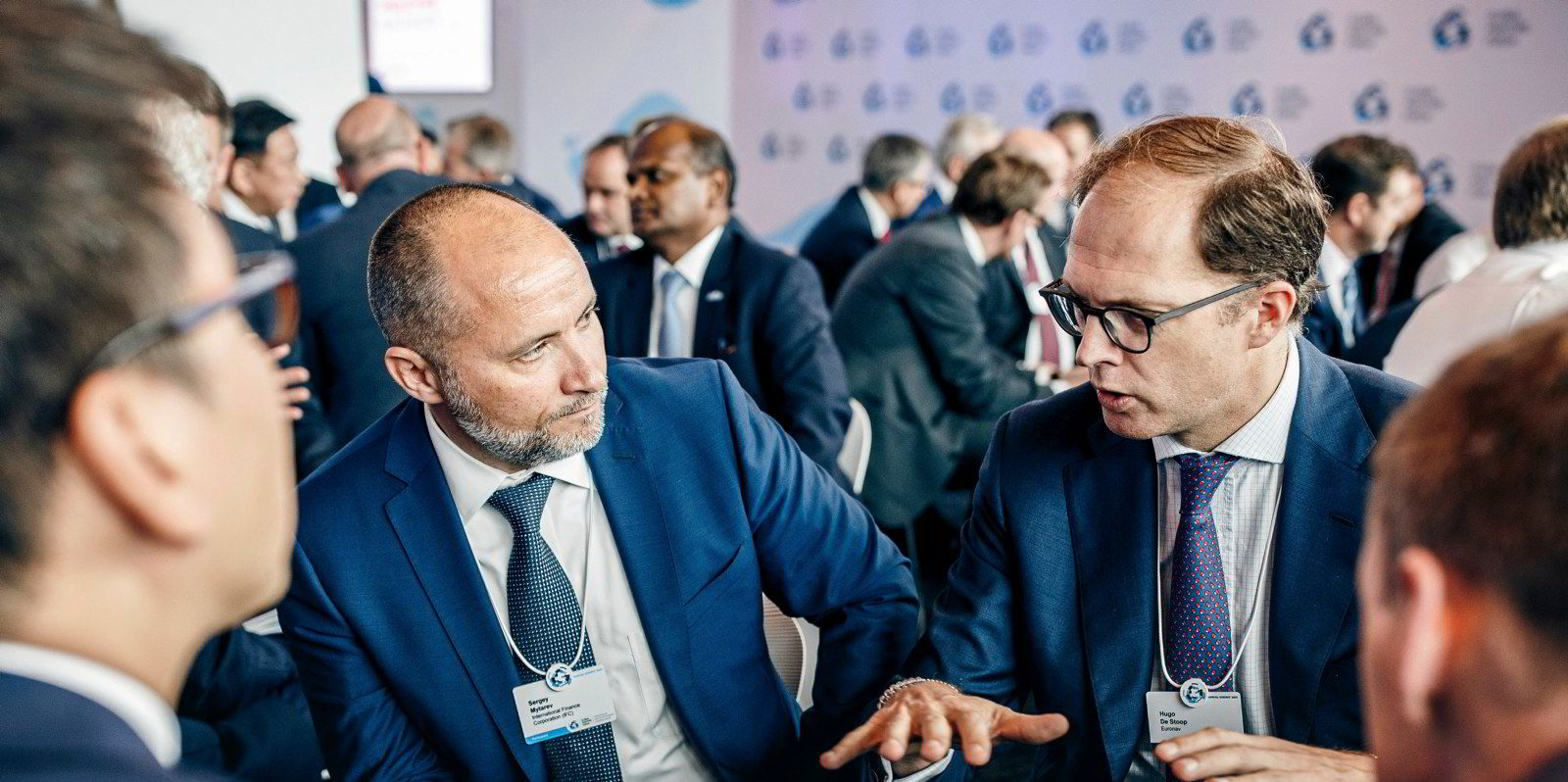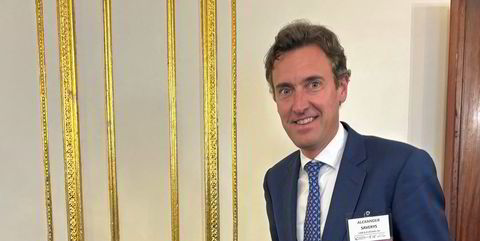A combined Euronav-Frontline fleet cannot be ruled out even if a merger is off the table, and the prospect of a union based on assets rather than equities would boost both stocks.
So believes Eirik Haavaldsen, head of research at Oslo’s Pareto Securities.
But there are big ifs: “If they can sit down and talk to each other, there is indeed an obvious possibility for Euronav to sell ships,” Haavaldsen told Norwegian business daily Finansavisen.
Separately to TradeWinds, the analyst said he believes investors would welcome that alternative.
The speculation is also overshadowed by Euronav’s announcement today that it has determined that Frontline had no right to break its takeover agreement of last July, and will take “appropriate action” in response, possibly including litigation.
The shares of New York-listed Frontline and Antwerp-listed Euronav had gone in opposite directions this week after John Fredriksen-controlled Frontline abruptly dropped the takeover bid, with Frontline shareholders getting rich and Euronav in a sell-off.
The increasing discount to net asset value at which Euronav is trading would play a role in a possible fleet deal, Haavaldsen believes, and so will a better pricing of Frontline shares in an eventual cash-plus-shares partial fleet sale.
That means both shares should be a buy now, not just Frontline’s.
“The problem Frontline shareholders had had with the merger was that the ratio of Frontline to Euronav shares in the deal was quite dilutive for them,” he told TradeWinds, referring to the Fredriksen camp’s offer that matched each Euronav share with 1.45 shares of Frontline.
“But the market would welcome a solution where Frontline avoids that dilutive effect by a purchase of Euronav vessels instead.”

Communication among the three sides, Hugo de Stoop-led Euronav itself plus suitor Fredriksen and Euronav’s founding Saverys family, has reportedly not been as open as some would like.
Alexander Saverys leads his family’s Compagnie Maritime Belge (CMB) and its subsidiaries from a different floor of the same building where Hugo de Stoop holds the rudder of Euronav.
The future of de Stoop is unclear after his months of steering a course between Fredriksen and the Saverys in the interests of all Euronav shareholders.
But Haavaldsen still envisages a conversation in which Frontline and Fredriksen’s private companies split the fleet, with Euronav getting a mix of cash, Frontline shares, and its own shares now in Norwegian hands.
“Euronav’s eco VLCCs built since 2014 or 2015 are most interesting for Frontline, while his suezmaxes are not such a good fit,” he said.
“But then in today’s market, suezmaxes built from 2007 to 2009 are definitely not hard to sell.”
Of Euronav’s 20 suezmaxes and 36 VLCCs, 14 suezmaxes and 11 VLCCs are over 10 years old, according to data provider VesselsValue.
Euronav spokesman Brian Gallagher said the company had no comment on the speculation about a fleet deal, and declined to go beyond today’s statement on what remedies the company might seek. Frontline has been contacted for comment.





